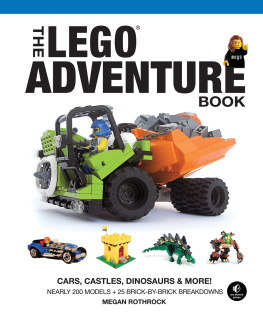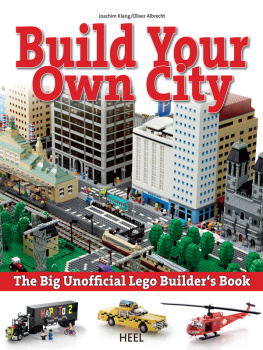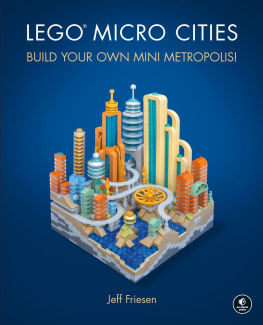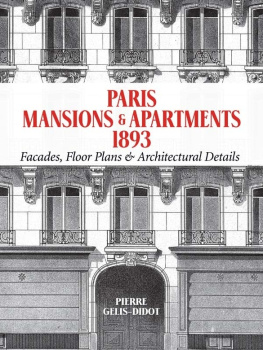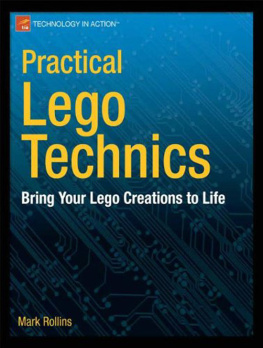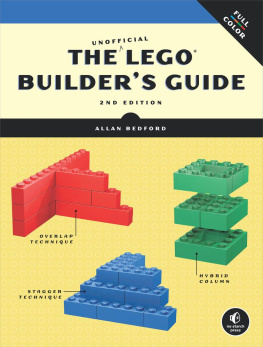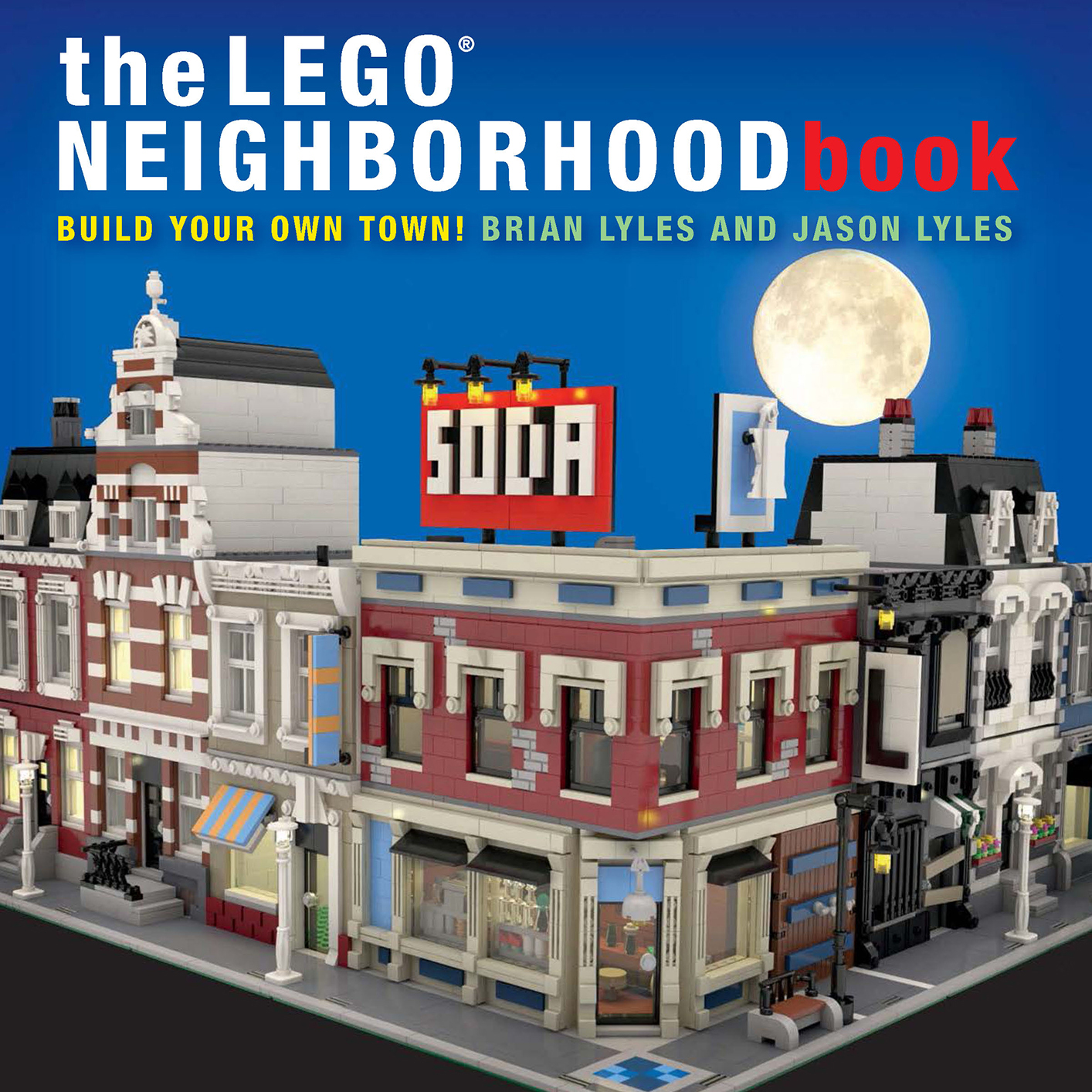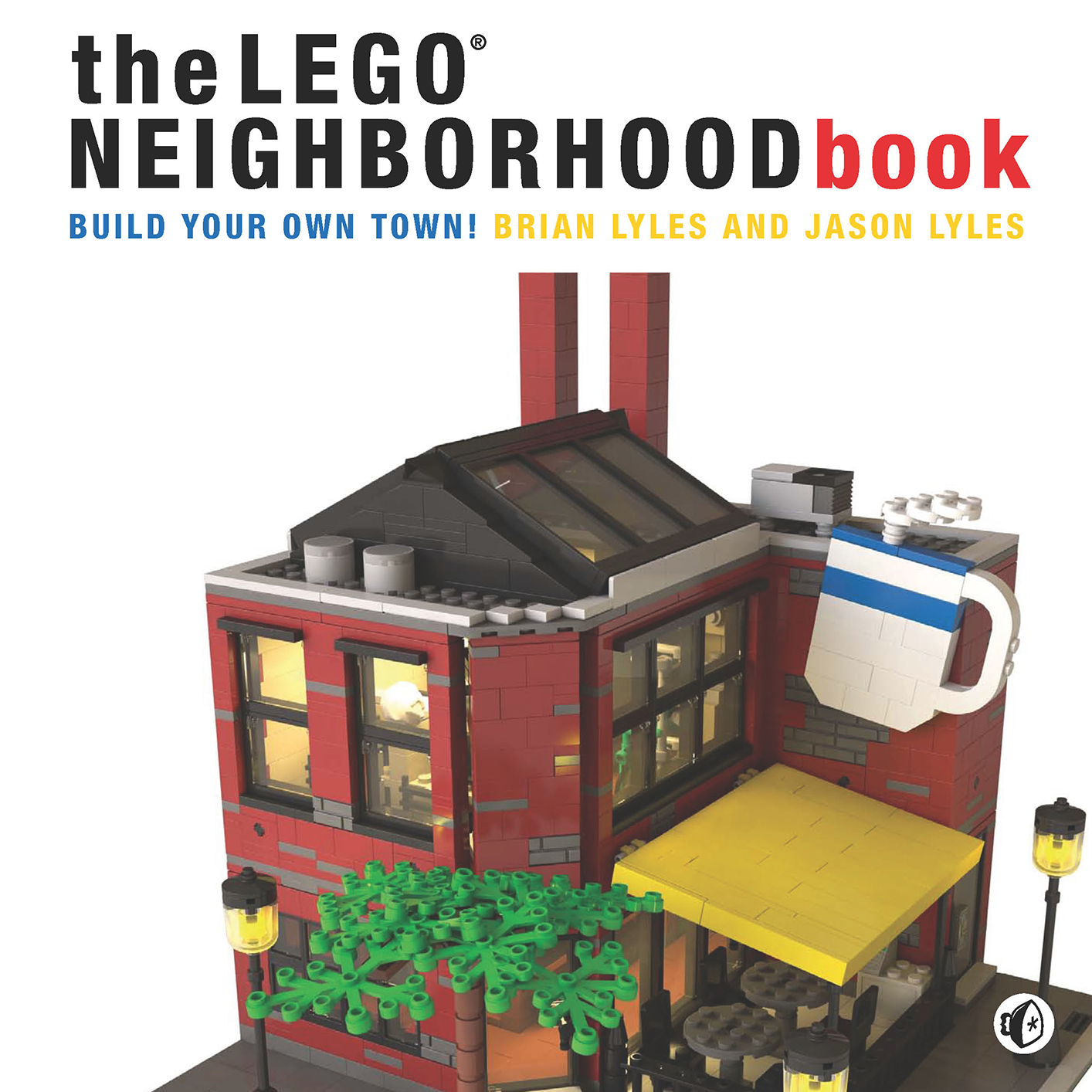
The LEGO Neighborhood Book. Copyright 2014 by Brian Lyles and Jason Lyles.
All rights reserved. No part of this work may be reproduced or transmitted in any form or by any means,
electronic or mechanical, including photocopying, recording, or by any information storage or retrieval
system, without the prior written permission of the copyright owner and the publisher.
Printed in China
First Printing
18 17 16 15 14 2 3 4 5 6 7 8 9
ISBN-10: 1-59327-571-4
ISBN-13: 978-1-59327-571-6
Publisher: William Pollock
Production Editor: Alison Law
Cover Design: Beth Middleworth
Cover Illustration and Selected 3D Renders: Mattia Zamboni
Developmental Editor: Tyler Ortman
Copyeditor: Rachel Monaghan
Compositors: Ryan Byarlay and Riley Hoffman
Proofreaders: Laurel Chun and Lisa Devoto Farrell
For information on distribution, translations, or bulk sales please contact
No Starch Press, Inc. directly:
No Starch Press, Inc.
245 8th Street, San Francisco, CA 94103
phone: 415.863.9900; fax: 415.863.9950;
Library of Congress Cataloging-in-Publication Data
Lyles, Brian.
The LEGO neighborhood book : build your own town! / by Brian Lyles and Jason Lyles.
pages cm
Audience: Age 10.
ISBN-10: 1-59327-571-4
ISBN-13: 978-1-59327-571-6
Neighborhoods--Models--Juvenile literature. 2. City planning--Juvenile literature. 3. LEGO
toys--Juvenile literature. I. Lyles, Jason. II. Title.
TD160.L95 2014
688.725--dc23
2014022194
No Starch Press and the No Starch Press logo are registered trademarks of No Starch Press, Inc. All
trademarks and copyrights are the property of their respective holders. Rather than use a trademark
symbol with every occurrence of a trademarked name, we are using the names only in an editorial fash
ion and to the benefit of the trademark owner, with no intention of infringement of the trademark.
LEGO, the Brick and Knob configurations, and the Minifigure are trademarks of the LEGO Group, which
does not authorize or endorse this book.
The information in this book is distributed on an As Is basis, without warranty. While every precaution
has been taken in the preparation of this work, neither the authors nor No Starch Press, Inc. shall have
any liability to any person or entity with respect to any loss or damage caused or alleged to be caused
directly or indirectly by the information contained in it.
Production Date: 6/10/14
Plant & Location: Printed by Everbest Printing (Guangzhou, China), Co. Ltd
Job / Batch #: 116492.2

= pages with building instructions
Contents
1 GETTING STARTED WITH THE CAF
CORNER STANDARD

Preface
We loved playing with LEGO when we were kids, and like a lot of kids, we dreamed of becoming LEGO designers when we grew up. But also like most other kids, we put our LEGO bricks away in the attic when we reached our early teens.
When we came back to LEGO as adults, we marveled at the things people were buildingthe astounding models featured online.
What really turned our heads, though, were the amazing minifig-scale buildings that LEGO had released. There was a wonderful community of builders trying to emulate the modular building style and improve upon it, too. We first fell in love with the Fire Brigade (set #10197). The rest, as they say, is history.
This book is dedicated to Jack, Ben, Joshua, Virginia, Ellie, and Daisy.
Weve built dozens of models since buying our Fire Brigade; theres just something irresistible about using little building blocks to create models that emulate architectural details, creating a miniature world. You can find building instructions for many of these models at our website, http://www.brickcitydepot.com/ .
We wrote this book to share our passion. We hope you get lots of ideas for building your own models in these pages.
Hi, Im Jason.
I work as a
software engineer.
My name is Brian, and
Im a videographer.
Well be your tour
guides. Lets get going!

Getting Started
with the
Caf Corner Standard
Before you can make your own beautiful buildings, youll need to understand the fundamentals. If youve ever built the LEGO Groups official modular building kits, then you already know the basics of how LEGO buildings can be connected to form streets, neighborhoods, and cities. If youre new to modular buildings, then youll want to pay special attention. Youll need this knowledge to make sure that the buildings you create line up with official LEGO sets.
In October 2007, the LEGO Group released its first modular building, Caf Corner (set #10182). This first building set the standard (sometimes called the Caf Corner Standard ) for how all later modular buildings would connect to one another and how the sidewalk would look. This style of building was developed by Jamie Berard, a designer at LEGO, and then embraced by a community of fans.

Base Size
The buildings connect to form a block or row of buildings.
All modular building sets to date use a 3232-stud base, composed of either a single 3232 plate or two 1632 plates. So, to adhere to the standard, you need to build in 16-stud-wide increments too: 1632, 3232, 4832, and so forth. You can, of course, create larger buildings by combining baseplates.
A 1632 plate versus a 3232 square plate
Small shops and narrow
houses work better with
the 1632 baseplate, but the
depth of each lot needs
to be 32 studs, even at a
narrower width.
CHAPTER 1

Connecting
the Buildings
9 studs
10 studs
9 studs
Buildings are connected to one another at the base via LEGO Technic pins. Youll use four Technic bricks (part #3700) and two Technic pins (part #2780) for each connection.
Of course, you must space these Technic bricks consistently to match other buildings.
For a corner building, the placement of the Technic bricks remains the same: the 9-stud, 10-stud, 9-stud pattern shown at right.
Even though you dont have a building yet, youll want to place these Technic parts first for planning purposes.
Corner buildings maintain the same connections at the same spacing, just on a different side of the plate.
9 studs
10 studs
9 studs
10 studs


